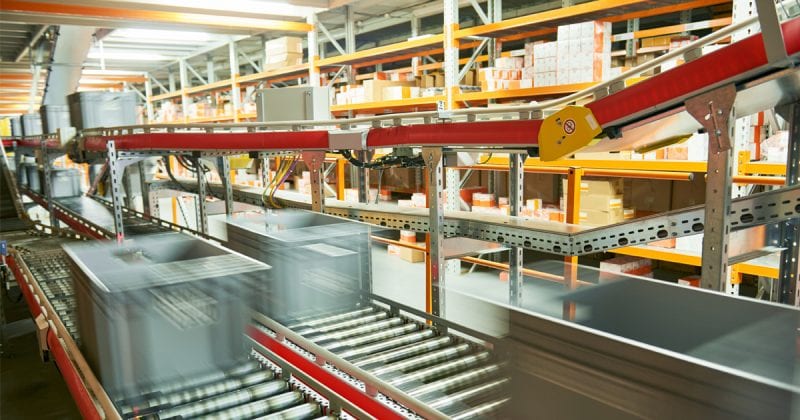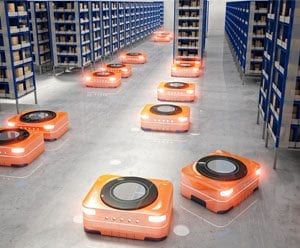
4 top trends impacting supply chain management in 2019

Technology, trade, talent, and transportation — the ability to manage these four “T”s will determine how well supply chain organizations can meet and manage customer expectations in the coming year.
With the advent of new technologies in the industry, logistics managers have to be quick to adapt in order to deal with the heightened level of complexity along the supply chain.
From blockchain to platooning, these emerging technologies, when adopted, will continue to evolve over time and can ultimately help in optimizing supply chain operations through different means.
“We are seeing key technologies reach a level of maturity that enables them to better manage complexity, while also increasing productivity and reducing costs. That makes 2019 a very exciting year in the evolution of the industry,” said Scott Sureddin, CEO of DHL Supply Chain, North America.
While supply chains are already reaping the benefits of technology in the shift toward digitalization, it is expected to continue driving greater impact on operations in the coming year.
Below are the four trends predicted to shake up the supply chain in 2019:
1. Warehouse robotics come of age
Robotics are already proving their worth in select warehouse applications, but the technology is expected to reach a tipping point this year.
For online grocer Ocado, their use of robotics, combined with artificial intelligence (AI) and Internet of Things (IoT), enables them to fulfill a whopping 280,000 orders a week across their automated distributed centers.
While order picking is a key focus of robotic development, the technology is expected to have an impact that extends beyond e-commerce fulfillment.
Recognizing the immense potential of robotics, DHL Supply Chain recently announced a US$300million (€262 million) investment to expand the deployment of emerging technologies in its North American facilities by 2020.
The ability of the current generation of robots to work alongside humans, while performing low-value tasks that increase overall warehouse productivity, can prove to be a valuable asset across a broad range of industries.
“We’ve taken a multi-vendor strategy to robotics that allows us to select the best technology for each application, while using our scale to support multiple emerging solutions. This will ultimately help broaden the range of solutions available to the industry,” said Sureddin.
2. Increased uncertainty drives greater agility
In today’s global, interconnected supply chains, new tariffs, renegotiated trade agreements and regional climate events can have a ripple effect that paralyzes an entire supply chain. Which makes proactive supply chain planning more important than ever.
Designing supply chains with the flexibility to circumvent natural disasters, or quickly re-configure to accommodate shifts in costs or material availability resulting from tariffs, has become critical to maintaining high service levels.
Sophisticated supply chain modeling allows what-if scenarios to be performed to quickly identify the best response to sudden fluctuations in costs, transportation routes or material availability.
In addition, cloud-based risk management solutions are using the power of big data analytics to identify potential supply chain disruptions, and proactively reposition orders and inventory to maintain service levels.
3. Talent gets the attention it deserves
While the talent gap remains a significant challenge, solutions are starting to emerge.
DHL Supply Chain, for instance, has taken a proactive and multi-faceted approach to recruiting and retention that has allowed the company to consistently meet customer requirements in tight labor markets.
“New technologies and fundamental areas of the supply chain have changed, meaning they now require that a person has a different and much larger skillset than required when most of the current workforce began their careers,” said Lisa Harrington, author of ‘The Supply Chain Talent Shortage: From Gap to Crisis’ report.
In addition to using robotics to increase productivity, the company has automated the recruiting process — from online applications to pre-hire testing to onboarding — to increase the quantity and quality of applicants for hourly positions.
The company has also been working closely with a number of universities and colleges to promote the career opportunities available in supply chain management while equipping students with the necessary skills to enter the industry.
4. Digitalization closes the transportation service gap and helps shippers think beyond today’s shipment
Digitalization is being applied broadly to a host of supply chain issues, but the area that will benefit most directly could be transportation.
A number of digital solutions are emerging to enable the industry to make better use of available transportation resources and close the service gap.
One such example is the cloud-based Transportation Management System (TMS) which can provide the insights and data to optimize resources of a company’s transportation fleet.
In addition, the adoption of IoT, in the form of fleet management systems, allows data from truck operations to improve utilization and reduce downtime in future deployments.
The biggest opportunity, however, lies in the emergence of digital freight platforms, which are essentially online marketplaces that connect shippers with carriers, streamlining processes, optimizing costs and expanding the available options.
So far, DHL Supply Chain has heavily invested in these types of innovations to help shippers think beyond today’s shipment and strategically plan for the future, while still solving the challenges of today.
Increased complexity will continue to challenge the industry in 2019. However, new digital solutions are reaching a level of maturity that warrants widespread adoption.
This could allow the industry to take significant steps forward in the areas of speed and productivity, while effectively managing the challenges created by talent and tariffs.
ALSO WORTH READING













 English
English